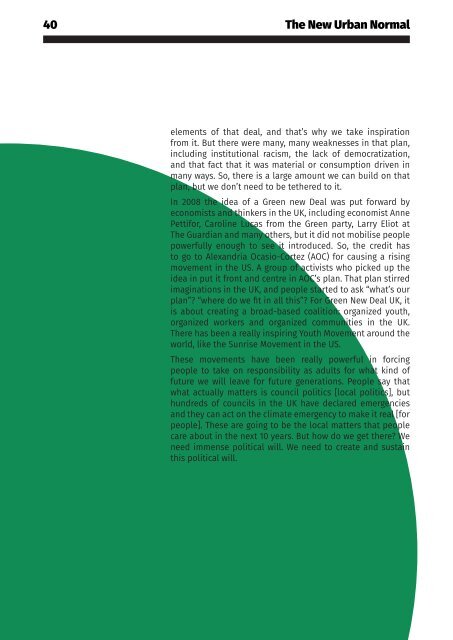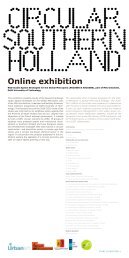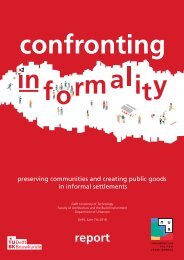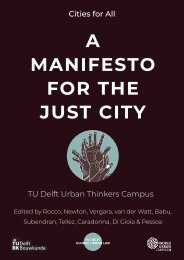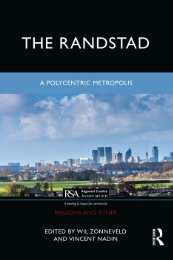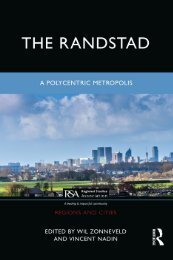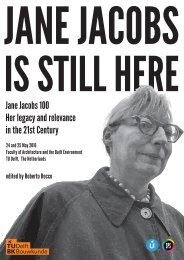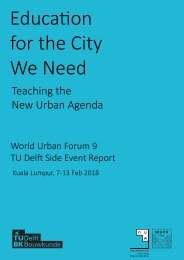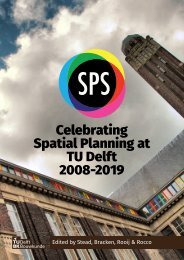The New Urban Normal Urban Sustainability and Resilience Post COVID-19
The COVID19 pandemic has exposed several systemic failures and injustices in the way cities are planned and designed around the world. It has also exposed the failings due to lack of planning in most places in the Global South. Careful, inclusive and participatory spatial planning is thought to greatly strengthen the capacity of societies to withstand systemic shocks, as testified by the New Urban Agenda (2016), the Pact of Amsterdam (2016) and the New Leipzig Charter (2020). Integrated affordable housing, for instance, has come to the top of the agenda once again, now propelled by the realisation that slum dwellers (a staggering 1 billion people around the world) and homeless people are particularly vulnerable to health crises and other societal shocks. The pandemic has been saluted as an opportunity to implement far-reaching transformation of our societies towards sustainability and justice, but little signs of systemic change have actually surfaced. For example, several cities around the world claim they will overhaul public space, take space from private cars, and invest more on green spaces, bicycle paths and quality public mobility. But little has been said about addressing the structural causes of inequality. The champions of the circular economy salute the pandemic as a new dawn for more human-centred capitalism, for the abandonment of exploitation and unfair distribution, and a world where workers can find decent housing, health, work and leisure. But what is actually happening on the ground?
The COVID19 pandemic has exposed several systemic
failures and injustices in the way cities are planned and
designed around the world. It has also exposed the failings
due to lack of planning in most places in the Global South.
Careful, inclusive and participatory spatial planning is
thought to greatly strengthen the capacity of societies to
withstand systemic shocks, as testified by the New Urban
Agenda (2016), the Pact of Amsterdam (2016) and the New
Leipzig Charter (2020). Integrated affordable housing, for
instance, has come to the top of the agenda once again,
now propelled by the realisation that slum dwellers (a
staggering 1 billion people around the world) and homeless
people are particularly vulnerable to health crises and
other societal shocks.
The pandemic has been saluted as an opportunity to
implement far-reaching transformation of our societies
towards sustainability and justice, but little signs of systemic
change have actually surfaced. For example, several cities
around the world claim they will overhaul public space,
take space from private cars, and invest more on green
spaces, bicycle paths and quality public mobility. But little
has been said about addressing the structural causes of
inequality. The champions of the circular economy salute
the pandemic as a new dawn for more human-centred
capitalism, for the abandonment of exploitation and unfair
distribution, and a world where workers can find decent
housing, health, work and leisure. But what is actually
happening on the ground?
Create successful ePaper yourself
Turn your PDF publications into a flip-book with our unique Google optimized e-Paper software.
40 <strong>The</strong> <strong>New</strong> <strong>Urban</strong> <strong>Normal</strong><br />
elements of that deal, <strong>and</strong> that’s why we take inspiration<br />
from it. But there were many, many weaknesses in that plan,<br />
including institutional racism, the lack of democratization,<br />
<strong>and</strong> that fact that it was material or consumption driven in<br />
many ways. So, there is a large amount we can build on that<br />
plan, but we don’t need to be tethered to it.<br />
In 2008 the idea of a Green new Deal was put forward by<br />
economists <strong>and</strong> thinkers in the UK, including economist Anne<br />
Pettifor, Caroline Lucas from the Green party, Larry Eliot at<br />
<strong>The</strong> Guardian <strong>and</strong> many others, but it did not mobilise people<br />
powerfully enough to see it introduced. So, the credit has<br />
to go to Alex<strong>and</strong>ria Ocasio-Cortez (AOC) for causing a rising<br />
movement in the US. A group of activists who picked up the<br />
idea in put it front <strong>and</strong> centre in AOC’s plan. That plan stirred<br />
imaginations in the UK, <strong>and</strong> people started to ask “what’s our<br />
plan”? “where do we fit in all this”? For Green <strong>New</strong> Deal UK, it<br />
is about creating a broad-based coalition: organized youth,<br />
organized workers <strong>and</strong> organized communities in the UK.<br />
<strong>The</strong>re has been a really inspiring Youth Movement around the<br />
world, like the Sunrise Movement in the US.<br />
<strong>The</strong>se movements have been really powerful in forcing<br />
people to take on responsibility as adults for what kind of<br />
future we will leave for future generations. People say that<br />
what actually matters is council politics [local politics], but<br />
hundreds of councils in the UK have declared emergencies<br />
<strong>and</strong> they can act on the climate emergency to make it real [for<br />
people]. <strong>The</strong>se are going to be the local matters that people<br />
care about in the next 10 years. But how do we get there? We<br />
need immense political will. We need to create <strong>and</strong> sustain<br />
this political will.


